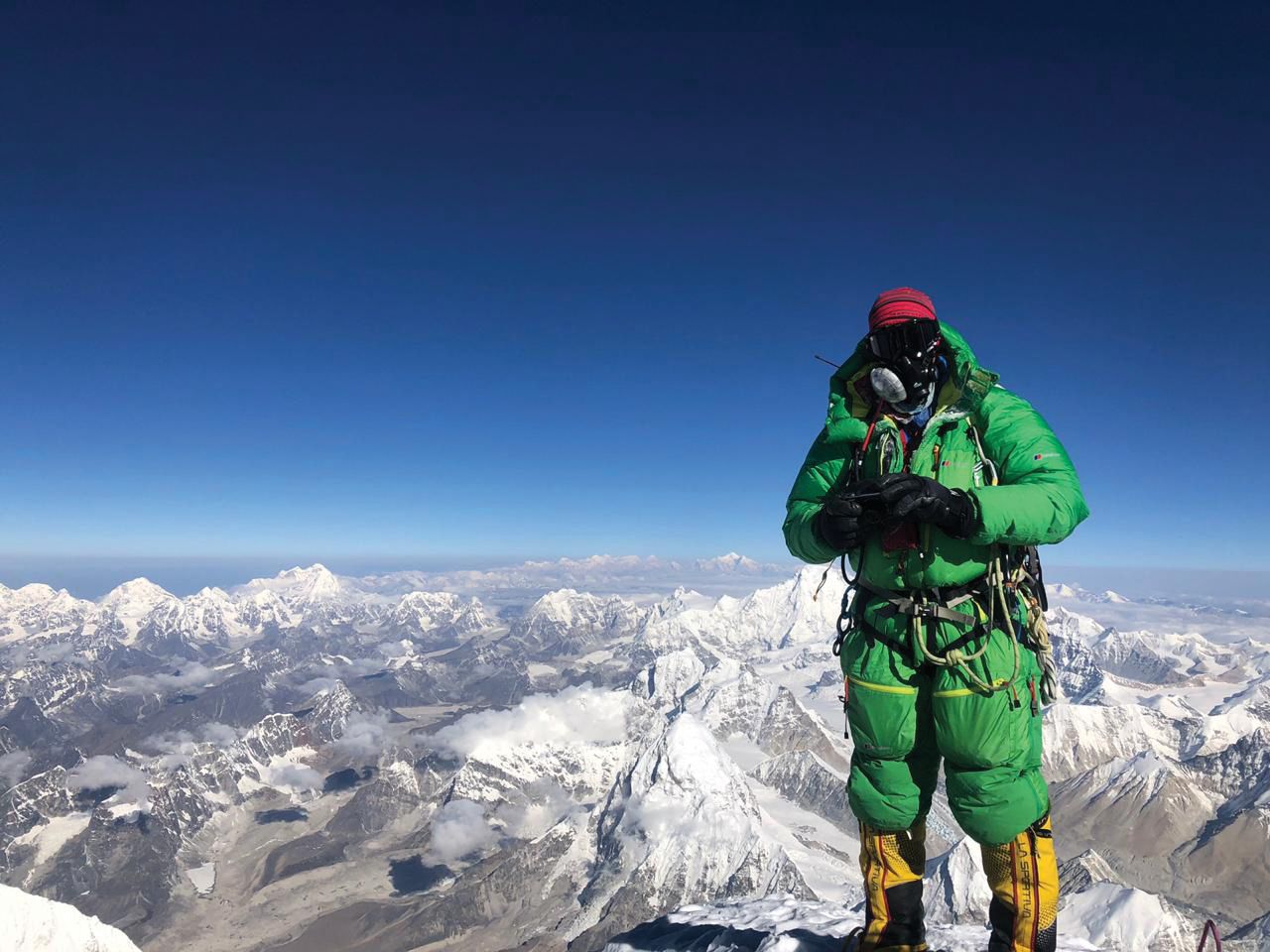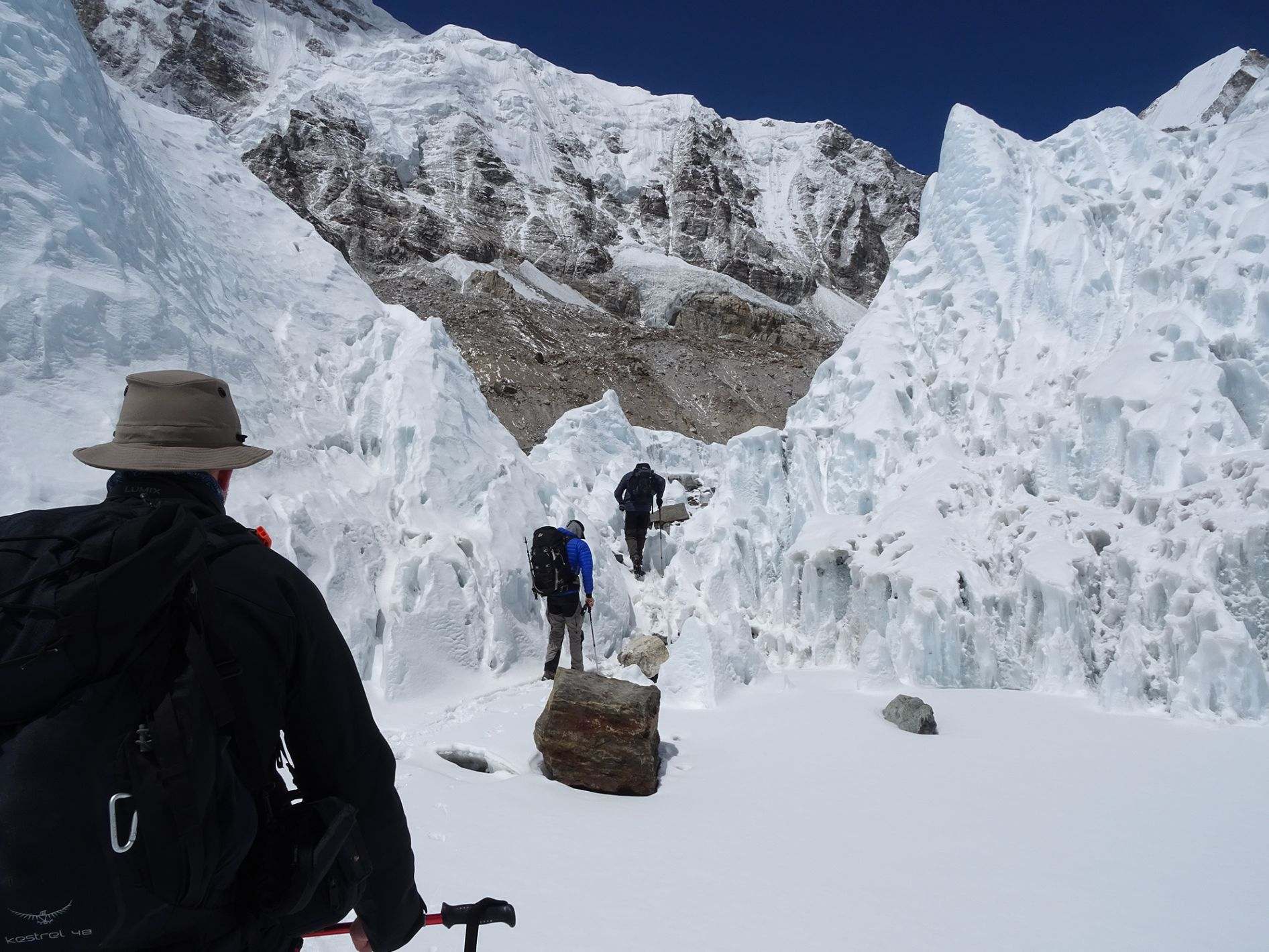What Happens to Your Body in the Death Zone
The summits of the world’s 14 tallest mountains are all found in what is ominously known as the “death zone,” which is typically identified as 8,000 metres (26,000 feet) above sea level.
At these altitudes, the oxygen levels are insufficient to sustain human life for an extended period. Additionally, exposure to stronger UV radiation, freezing temperatures and extreme weather pose other dangers to climbers above this point.
Edouard Wyss-Dunant, a doctor who led the 1952 Swiss Mount Everest Expedition, which set the official record for the highest ascent ever made at the time, was the first to coin the term, calling the point above 8,000 metres the “lethal zone.”
While official statistics are difficult to come by, many injuries and deaths on high-altitude mountaineering expeditions are directly or indirectly caused by the death zone's effects on the human body.
What happens to your body in the death zone?

Humans have evolved to function best at sea level, where the atmospheric concentration of oxygen is about 21 percent. In healthy people, this means that the hemoglobin – the oxygen-transporting protein in red blood cells – becomes saturated.
However, atmospheric pressure steadily decreases as elevation is gained, resulting in lower oxygen levels in the air. Once the levels of oxygen in the air are too low, the hemoglobin no longer becomes saturated and not enough oxygen is transported throughout the body.
The oxygen saturation of hemoglobin begins to decrease rapidly above 2,100 metres (6,900 feet). At 3,700 metres (12,000 feet), there is already 40 percent less oxygen in the air.
As a result, a climber’s rate of breathing increases at altitude – even while the body is at rest – to inhale the necessary oxygen. As the amount of oxygen in the blood falls, heart rate soars, rising to 140 beats per minute, which increases the risk of a heart attack.
Keep reading: Nutrition Tips For Mountaineering and Trekking Expeditions
However, the body begins to acclimatise as the amount of oxygen in the air drops. Additional red blood cells are produced, and the heart beats faster to transport these cells around the body.
Non-essential body functions are suppressed, the efficiency of food digestion dramatically drops, and breathing becomes deeper and more infrequent to compensate for the lack of oxygen.
Climbers frequently have more trouble sleeping at high altitudes, lose muscle mass more rapidly than they would at sea level and experience a significant decline in appetite, usually accompanied y weight loss.
Altitude severely affects the lungs and brain

Normally, humans require days or weeks for the body to acclimate appropriately, which is why most expeditions above 7,000 metres (23,000 feet) take about two months.
However, failure to acclimate correctly may lead to acute mountain sickness, high altitude pulmonary edema (HAPE) or high altitude cerebral edema (HACE).
HAPE is caused when fluid begins to leak into the lungs and can be quickly identified using a stethoscope to listen for a clicking sound in the lungs. Common symptoms of HAPE include fatigue, difficulty breathing, especially while laying down, and coughing up white, watery fluids.
HACE is essentially HAPE for the brain. If insufficient levels of oxygen flow to the brain for an extended period, it starts to swell, which can lead to nausea and make it more difficult to think and reason clearly.
This can have detrimental long-term health effects, but on the top of one of the world’s tallest mountains, it leads to more immediate concerns.
Climbers with insufficient oxygen going to the brain can enter a state known as high-altitude psychosis. In this state, climbers may wander off the path, remove articles of clothing or forget to clip themselves into a rope team.
Other risks of spending time in the death zone
Away from the altitude, climbers in and near the death zone also have to contend with higher levels of UV radiation, which can reflect off the ice and snow and damage eyesight.
Generally, temperatures at these elevations also do not exceed –18 ºC (0 ºF), increasing the risk of frostbite to the extremities.
The importance of acclimatisation

According to Peter Hackett, a doctor at the Institute of Altitude Medicine, it is impossible to acclimate to the death zone, which is why timing is so important on expeditions above 8,000 metres.
In fact, the body will never fully acclimate to any elevation above 6,000 metres (19,700 feet), which is why it is essential to coordinate summit pushes on high-altitude expeditions with the best weather windows – to get to the top and back down in the shortest possible period.
Keep reading: How to Train for Your Next Mountaineering Adventure
While limiting exposure to the death zone is critical, climbers need to acclimate to the high altitudes as well as possible to ensure the best chance of success.
Spending days or weeks at altitude allows the body to adjust in several key ways to lower concentrations of oxygen to make breathing and other physical exertions more efficient.
Sustained acclimatisation increases the depth of respiration and expands lung capacity by pushing blood into portions of the lung not normally used at sea level.
Acclimatisation also allows the body to produce more red blood cells to carry oxygen and makes more of an enzyme that facilitates the release of oxygen from hemoglobin to other tissues in the body.
How to acclimatise to high-altitude

The best way to acclimate is to gain elevation when climbing from sea level gradually. Guides recommend steadily climbing to 3,000 metres (9,850 feet) and spending a few days at this elevation to begin the process.
From the 3,000 metre mark, most guides recommend a slow but steady ascent. Fortunately, this is built into many high-altitude mountaineering destinations in the form of the trek to base camp.
Once on the mountain, guides recommend climbing high but sleeping low, setting up the following camp no more than 500 vertical meters (1,640 feet) above where the climber slept the previous night.
Most high-altitude mountaineering expeditions consider this, and most high camps on the world's highest mountains are roughly 500 vertical metres apart. However, there are some mountains where the gap between camps may be more significant.
Conclusion
Many mountaineers aspire to reach the world’s highest summits, enjoying the views along the way, embracing the challenge of high-altitude mountaineering and celebrating the sublime feeling of accomplishing a long-help and much-worked-for goal.
However, climbing into the death zone comes with plenty of risks. So before booking your next high-altitude expedition, understand the risks and plan accordingly.
Compare prices and trips and read verified reviews on ExpedReview for free. It’s never too early to plan your next high-altitude mountaineering adventure!